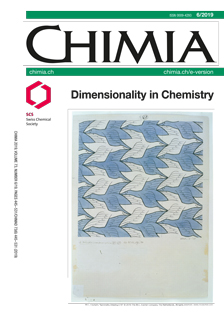Ditopic and Tetratopic 4,2':6',4''-Terpyridines as Structural Motifs in 2D- and 3D-Coordination Assemblies
DOI:
https://doi.org/10.2533/chimia.2019.462PMID:
38549207Keywords:
Coordination network, Coordination polymer, Ditopic ligand, Terpyridine, Tetratopic ligandAbstract
We overview the coordination chemistry of ditopic and tetratopic ligands with 4,2':6',4''-terpyridine metal-binding domains and illustrate the adaptability of these divergent ligands as building blocks in 2D- and 3D-coordination networks. The ditopic ligands we discuss are limited to roles as linkers in coordination assemblies, while the tetratopic ligands have the potential to be 4-connecting nodes. Both di- and tetratopic ligands are equipped with functionalities, typically alkyloxy chains, the nature of which has a profound effect upon the coordination assembly. Combinations of 4-connecting ligand nodes with metal-linkers lead to both 2D- and 3D-networks, while combinations of 4-connecting metal and ligand nodes give 3D-architectures. We also demonstrate constraint of the coordination assembly to 2-dimensions by depositing ditopic 4,2':6',4"-terpyridine ligands onto Au(111) or Cu(111) platforms with Cu adatoms in the former case; highly ordered ladder assemblies result which are independent of solvent molecules or anions.Funding data
-
Schweizerischer Nationalfonds zur Förderung der Wissenschaftlichen Forschung
Grant numbers 200020_149067;200020_162631;200020_182000;200020_182559
Downloads
Published
2019-07-26
Issue
Section
Scientific Articles
License
Copyright (c) 2019 Swiss Chemical Society

This work is licensed under a Creative Commons Attribution-NonCommercial 4.0 International License.
How to Cite
[1]
Chimia 2019, 73, 462, DOI: 10.2533/chimia.2019.462.







